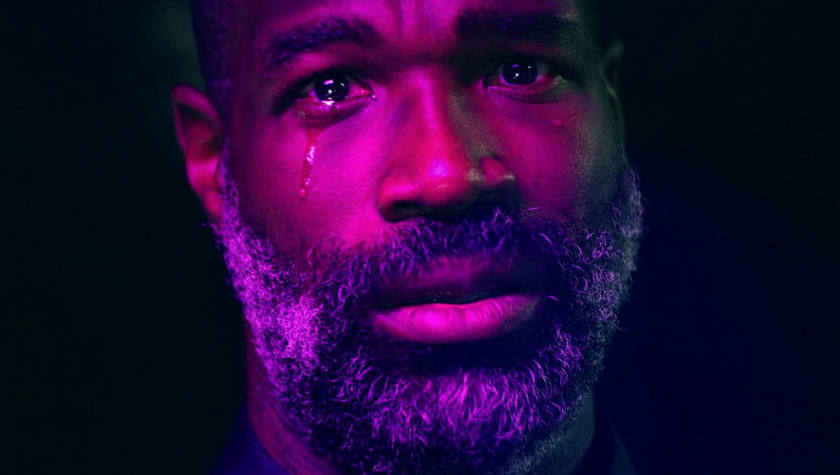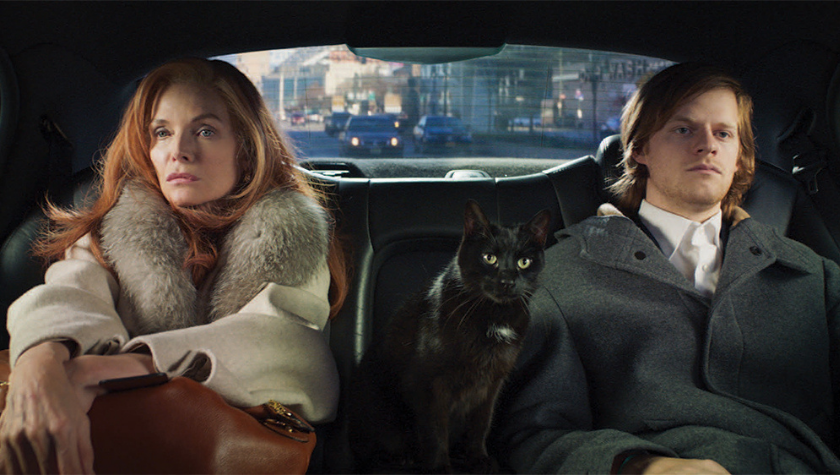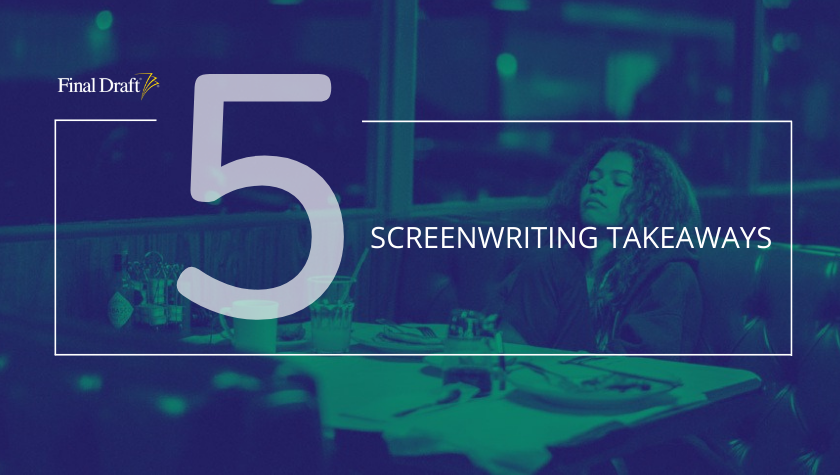5 Screenwriting Takeaways: The Uneasiness of 'Malcolm & Marie'
February 22, 2021
From the outset, Malcolm & Marie wants to make the audience feel uneasy. Malcolm walks in circles through a gorgeous Malibu home that he currently cohabitates with his equally gorgeous girlfriend Marie on what’s supposed to be the greatest night of his life, the opening night of a film he made that an audience really, really seems to like. But Marie’s heavy eyelids betray her from the first frame — she’s pissed. That’s the jumping off point for writer-director Sam Levinson’s pandemic micro-crew film made in just one house. Together with two of his Euphoria cast, Zendaya as Marie and John David Washington as Malcolm, they make the audience root for this handsome couple to settle in, but unsettled seems to be the biggest point.
We'll examine that other takeaways from Malcolm & Marie (Spoilers ahead).
1. An Artist’s Ego. A friend posed the question after the debut of this (arguably gorgeous and undeniably watchable) film: Is a male artist’s damaged ego still a valid plot point? There’s no escaping that this is a major plot point for Levinson (possibly his real life insecurities coming through?) and Malcolm. Malcolm spends at least one third of the film talking about an Los Angeles Times film critic and how she’s wronged him in the past and how she couldn’t possibly write a good article about the film she just saw, despite the fact that she is raving about it. Malcolm’s ego is fragile (as are many high profile filmmakers of bygone eras that Levinson’s film somewhat romanticizes — Woody Allen in Annie Hall comes to mind, as does Christoper Abbot in Lawrence Michael Levine's recent Black Bear, Fellini’s 8 1/2, etc.). But in this post Me Too era, is it a worthy exercise to give so much screen time to a man being very selfishly upset about how his art has been received (while possibly wronging his woman to make said art)? Watching the film, it isn't easy to like Malcolm — which is possibly also the point. But it was hard not to wonder what this film would have been like if the power dynamics had been reversed. The auteur was a woman who had used a man to get what she wants. Something, ironically, still rarely seen on screen. Maybe one day gender won’t feel like the plot point at all, but until the artist’s ego from a male POV gets less attention, that seems unlikely.2. Setting as Character. There is no denying every frame of this film shot by director of photography Marcell Rév ( Euphoria) was planned into glory. It’s gorgeous. The framing of Zendaya as Marie through a window, her silhouette in the morning sun, her desire to disappear in a bathtub, John David Washington’s pacing Malcolm in the opening — this house in black and white sometimes says epically more about the distance between the couple on the edge of ending it all, than the script's very long monologues. Hopefully, Rév will be teaching master classes on how to shoot one location movies for years to come.
3. The Dance of Two. There are few films that succeed as just duets. This is one of them. Love or hate the main conceit of the film, there is no denying that Washington and Zendaya as Malcolm and Marie command attention. These are two actors at the top of their game that often overcome difficult dialogue that could be stilted delivered by any other actor (try calling someone by their name when you begin every sentence). That said, there are also gems of dialogue that will stick with the audience, and Marie nails where things have gone wrong: Marie: “You forgot to thank me, Malcolm. It’s not a minor fucking detail. That’s a big one.” Malcolm: “But I’ve thanked you a million times before. You know that I’m thankful. You know I’m appreciative. And you know I made a mistake, so why turn it into something more?” Marie: “Because it is more.” Malcolm: “What?” Marie: “It’s our entire fucking relationship in a nutshell.” If Zendaya gets an Oscar® nomination for her performance it will likely be for delivering the thank you speech that Malcolm should’ve given, exhausted in bed from a night of arguing. Zendaya could crash a ship with the flick of an eyebrow, and it would be well-deserved.
4. Power Dynamics. Another huge conceit of the movie is, of course, the fact that Malcolm used Marie’s story for fame and fortune, making a movie that was her autobiography. This is perhaps the most interesting plot point of the film and the dynamics of power shift frequently but perhaps not enough. Again, if the male gaze had shifted in the film, and Marie had concluded the night perhaps with the upper hand… Well, one can continue to wonder, what if?
5. Love Versus Need. This is perhaps the film's other strongest theme that one wishes was explored more deeply: Marie hits on it with a vague threat: “You know what, Malcolm? I feel like once you know someone is there for you, and once you know they love you, you never actually think of them again.” Malcolm: “That’s not true.” Marie: “It’s not until you’re about to lose someone that you finally pay attention.” If the audience genuinely believed Marie was walking out the door — or if, perhaps, there was a ticking clock that is so hard to come by in a movie made experimentally in a pandemic, perhaps the need over love would hit a harsher note. That said, both parties still do an incredible job of breaking hearts.
Final Takeaway: Malcolm & Marie examines love versus need, power versus passion, and ego versus art. While it often feels familiar, and occasionally a frustrating homage to the male gaze of days of yore, Washington and Zendaya rise above dialogue and premise to break hearts anyway, ultimately making for a very watchable experiment in pandemic filmmaking.
Written by: Lindsay Stidham
Lindsay holds an MFA in screenwriting from the American Film Institute. She has overseen two scripts from script to screen as a writer/ producer. SPOONER, starring Matthew Lillard (SLAMDANCE), and DOUCHEBAG (SUNDANCE) both released theatrically. Most recently Lindsay sold PLAY NICE starring Mary Lynn Rajskub. The series was distributed on Hulu. Recent directing endeavors include the Walla Walla premiering (and best screenplay nominated) TIL DEATH DO US PART, and the music video for Bible Belt’s Tomorrow All Today. Lindsay is currently working on an interactive romcom for the production company Effin' Funny, and a feature film script for Smarty Pants Pictures. Lindsay also currently works as an Adjunct Screenwriting Faculty member at USC’s School of Cinematic Arts. You can follow her work here: https://lindsaystidham.onfabrik.com/- Topics:
- Discussing TV & Film




